Here is everything you need to know about freekeh, a Mediterranean super grain with a delicious nutty, slightly smoky flavor. Plus, how to cook freekeh perfectly every time.
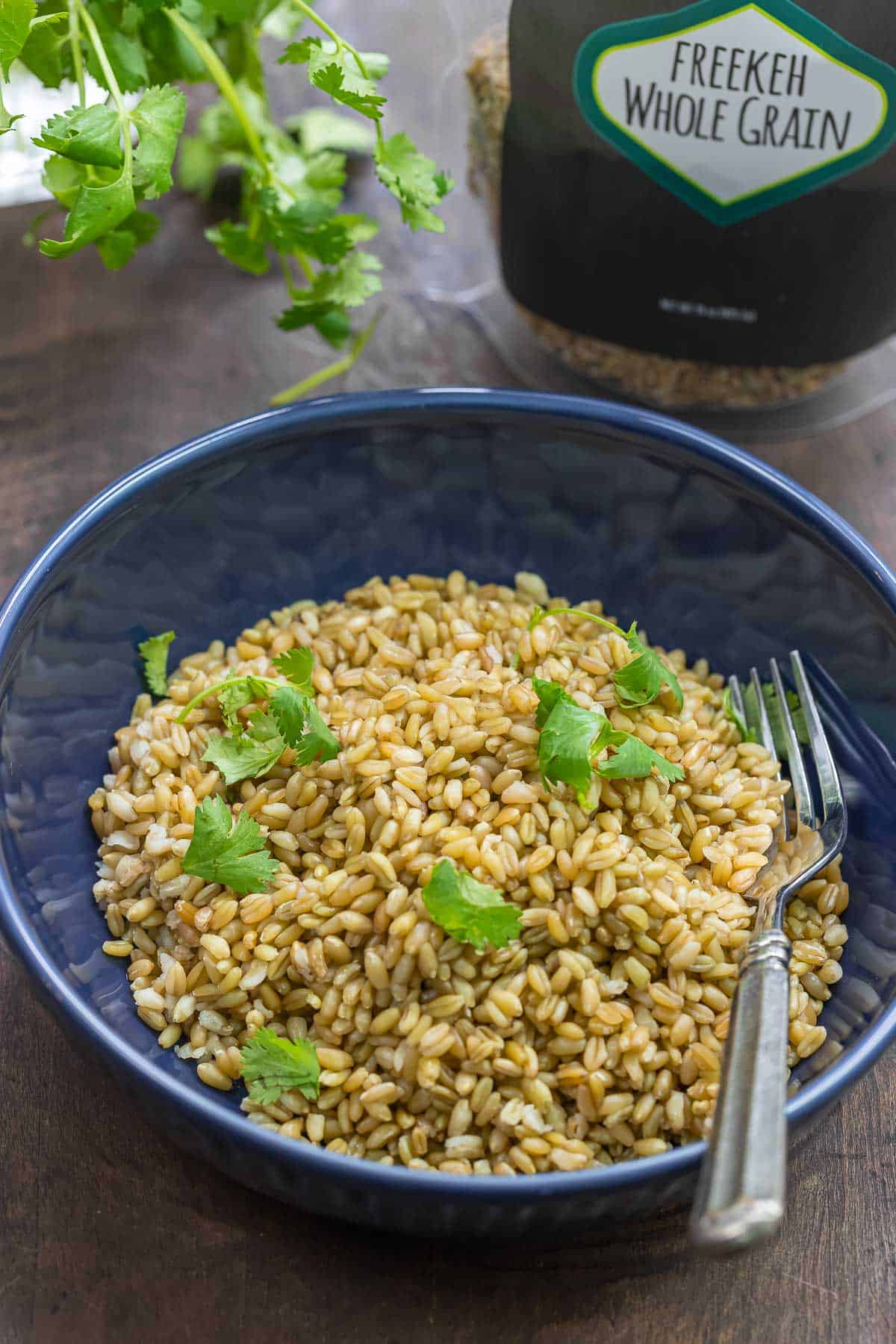
Freekeh may sound new to you, but like barley and farro, this nutritious wholegrain has been part of the Mediterranean diet for centuries! And if you’re looking to change things up from your typical grain or rice, it’s time to try it. You’ll love its chewy texture and unique, slightly smoky flavor.
Freekeh is easy to cook on the stovetop, and you can use it as you do other grains–as a simple side dish, tossed in a salad, or added in a soup like I do with barley.
Don’t worry, if it’s not available at a grocery store near you, you can find the best freekeh grains via our online shop.
In this post

What is freekeh?
Freekeh, also referred to as “farik” or “frik,” is an ancient Middle Eastern whole grain from young wheat that has been harvested early while the grains are still tender and green. The grains are then dried, fire-roasted, and rubbed (or polished) to remove the skins. In fact, this production process is where “freekeh” gets its name–from “faraka,” which means “to rub” in Arabic.
It’s is especially popular in the Levant and in Egypt, where I grew up.
What does it taste like? Like bulgur or barley, you’ll find it to be chewy and nutty, but thanks to the fire roasting process, it has a unique, slightly smoky flavor that makes it extra delicious and satisfying!
Freekeh nutrition
Other than its unique flavor, freekeh is a nutrition powerhouse and one of the healthiest grains to try. It is high in fiber, containing three times more fiber than brown rice. It is low in carbs and calories, and has a low glycemic index, promoting stable blood sugar levels.
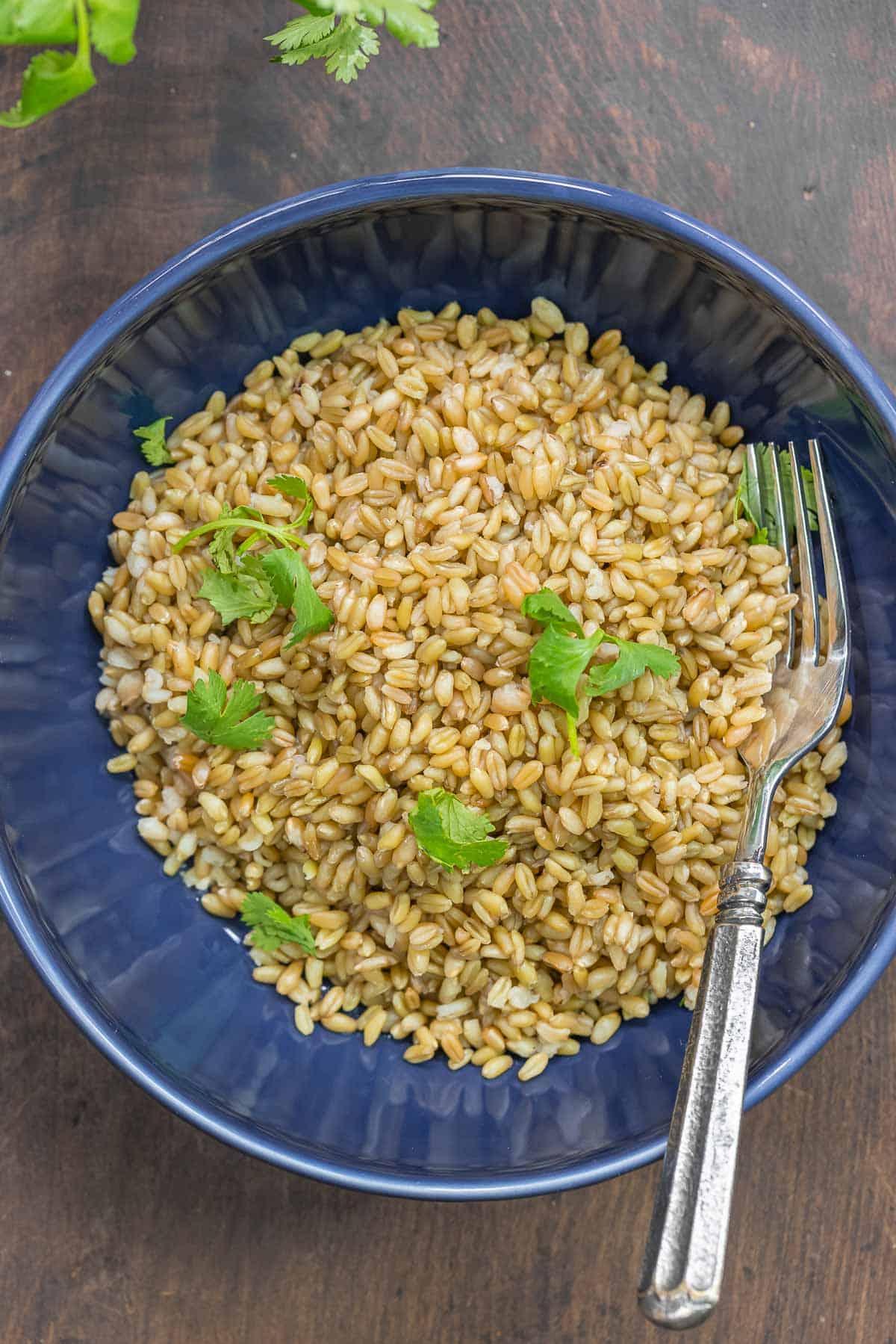
Cracked vs. whole freekeh
Wholegrain freekeh is exactly what it sounds like: It is the whole freekeh grain, containing the bran, germ, and endosperm. (Whole grains are more nutritious than refined grains because refining removes protein and other nutrients from a grain.) The wholegrain kind takes a bit longer than the cracked kind to cook, and has a pleasant chewy texture.
Cracked freekeh is wholegrain freekeh that has been broken into smaller pieces. It is quicker-cooking, and is similar to bulgur wheat in texture. It is still considered a whole grain, because it contains all the same parts as the whole grain.
Is freekeh gluten-free?
No. Like many grains, it contains gluten, and should be avoided by those on a gluten-free diet. You can replace it with rice or quinoa, if you must, but know that the flavor profile is quite different.
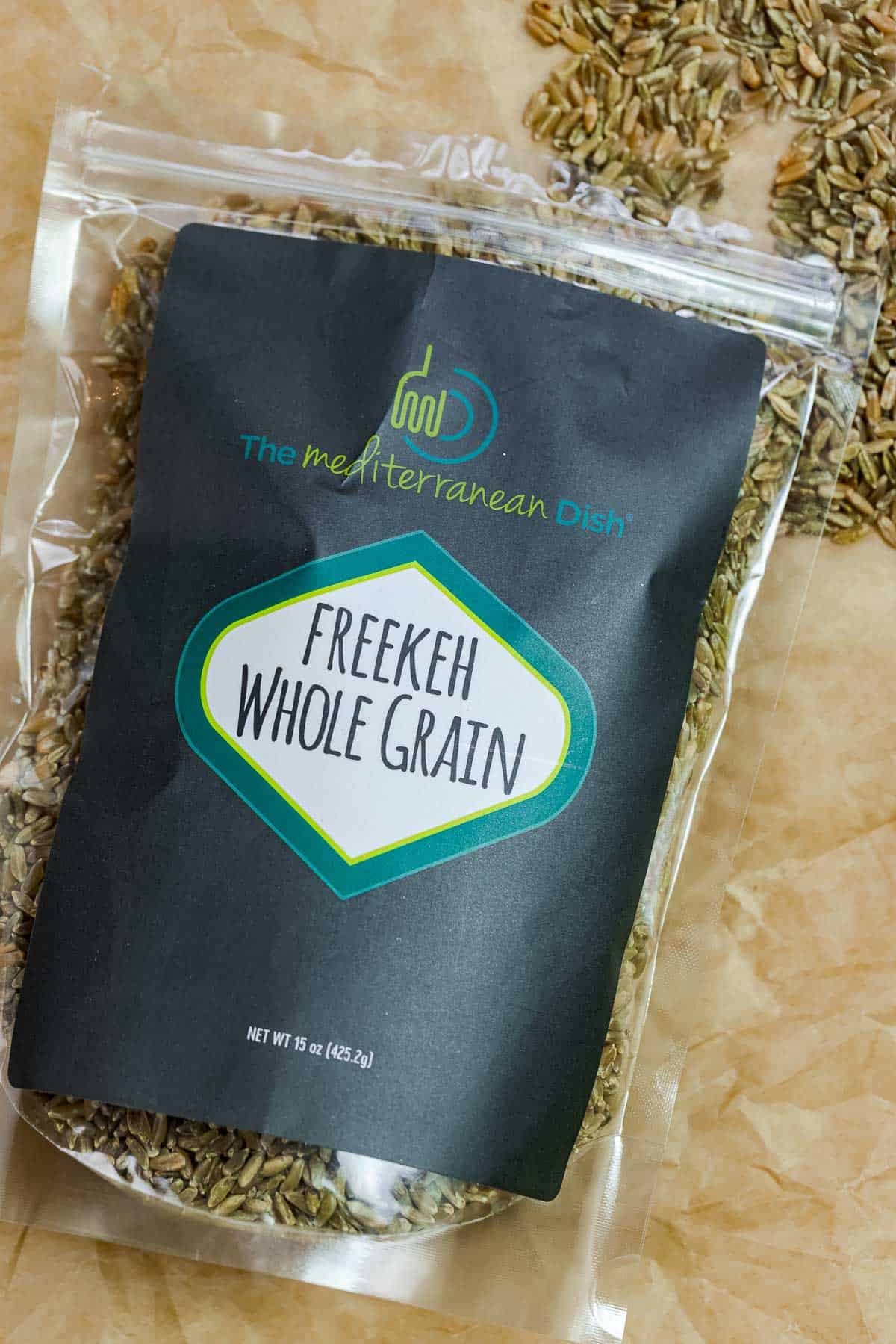
Where to buy freekeh
My favorite wholegrain freekeh can be found in our online shop. It is all-natural, easy to cook, and has a distinctly rich, nutty and smoky flavor. You’ll find it to be a satisfying substitute for rice or pasta.
Yield
1 cup of dry freekeh (wholegrain or cracked) will yield about 3 cups of cooked grains. And to cook 1 cup of this grain, you’ll need 2 ½ cups of water or broth.
How to cook freekeh
Both cracked and wholegrain freekeh are very easy to cook with basically no prep. In fact, it’s very similar to cooking lentils. All you need is 1 cup of grains and 2 ½ cups of water or broth, and kosher salt. Here is how to cook freekeh:
- Rinse it. Add 1 cup of grains to a medium saucepan. Look through it briefly to check for any debris and pick them out. Rinse the grains well.
- Add Water and Cook the grain. Add 2 ½ cups of water or broth to the saucepan. Bring to a boil over medium-high heat and season with kosher salt. Reduce the heat to low, cover, and simmer until the freekeh is tender. Cracked takes about 20 minutes, while wholegrain will take 35 to 40 minutes to cook. Once the grains have softened, drain any remaining liquid and fluff with a fork. Taste and sprinkle a little more salt if necessary. If you like, you can garnish with some fresh herbs like chopped parsley, mint, and coriander, or even some toasted pine nuts.
How to serve freekeh
Freekeh is a versatile grain that I like to use in various ways! Soups and stews, like my Freekeh Soup with Chicken and Fire Roasted Tomatoes, become instantly more filling with a cup of it added, and a freekeh pilaf has a complex, smoky flavor.
This grain is a great substitute for rice, pasta, or quinoa. When I want to shake things up, I swap out bulgur for freekeh in tabouli or toss it (instead of quinoa) into this warm salad with butternut. And when I need a festive side or stuffing, I always turn to my cranberry apple freekeh, made with cracked freekeh.
In the spring and summer months, I use it to make a nutritious power salad, like my Herby Freekeh Salad with Fresh Veggies and Pomegranate Dressing.
It also works well as a bed for a saucy protein dish, like shrimp fra diavolo, wine-braised chicken thighs, or Lebanese-style meatballs.
Storage tips
Like other grains, freekeh has a long shelf life. Uncooked wholegrain freekeh should be stored in an airtight container away from light, moisture, or heat. An unheated pantry is ideal for helping it to last several years! Cracked freekeh will last for just a few months in your pantry, and should be stored in the fridge or freezer if you want to keep it for longer than that.
Once cooked, store it in an airtight container in the refrigerator for up to 3 days. But it can be frozen for up to 3 months so it’s a good idea to cook large batches and freeze them to use later!
More grain recipes you might enjoy
Moroccan and Tunisian
How to Cook Couscous Perfectly Every Time!
Sides and Small Plates
No-Fail Basmati Rice (Stovetop & Rice Cooker)
Browse all Mediterranean recipes
Visit Our Shop
How to Cook Freekeh (Freekeh 101)
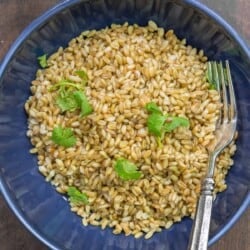
Ingredients
- 1 cup freekeh grains
- 2 ½ cups water or broth
- Kosher salt
- Parsley for garnish
Instructions
- Look through and pick over the freekeh to remove any debris or unwanted small stones. Rinse well a few times.
- In a medium saucepan, combine rinsed freekeh with the water or broth in a saucepan.
- Bring to a boil, and season lightly with kosher salt.
- Reduce the heat, cover, and simmer over low heat until the grains are tender and slightly chewy, anywhere from 20 to 40 minutes. (ours will take around 35 minutes because it is wholegrain freekeh)
- Drain any remaining water and fluff the freekeh with a fork.
- Transfer to a serving bowl and add chopped parsley for garnish.
Video
Notes
- Is freekeh gluten free? No, it is not, and it should be avoided by those who do not eat gluten.
- Where to buy freekeh? Find my favorite wholegrain freekeh here via our online shop.
- Yield: 1 cup of uncooked freekeh grains yields approx. 3 cups cooked grains.
- How to serve it: To bulk up soups and stews, as a substitute for other grains and pasta in things like tabouli and salads, and as a bed for saucy dishes like shrimp fra diavolo or wine-braised chicken thighs.
- Storage: Uncooked wholegrain freekeh should be stored in an airtight container away from light, moisture, or heat (like in an unheated pantry). It can last several years if stored correctly! Cracked freekeh has a shorter shelf-life, and will last for just a few months in your pantry. Store it in the fridge or freezer if you want to keep it for longer than that. Once cooked, store freekeh in an airtight container in the refrigerator for up to 3 days. But it can be frozen for up to 3 months so it’s a good idea to cook large batches and freeze them to use later!
- Visit our shop to browse our all-natural and organic spices, olive oils, grains (like wholegrain freekeh) and much more!

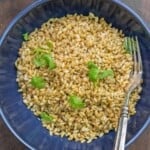
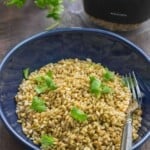
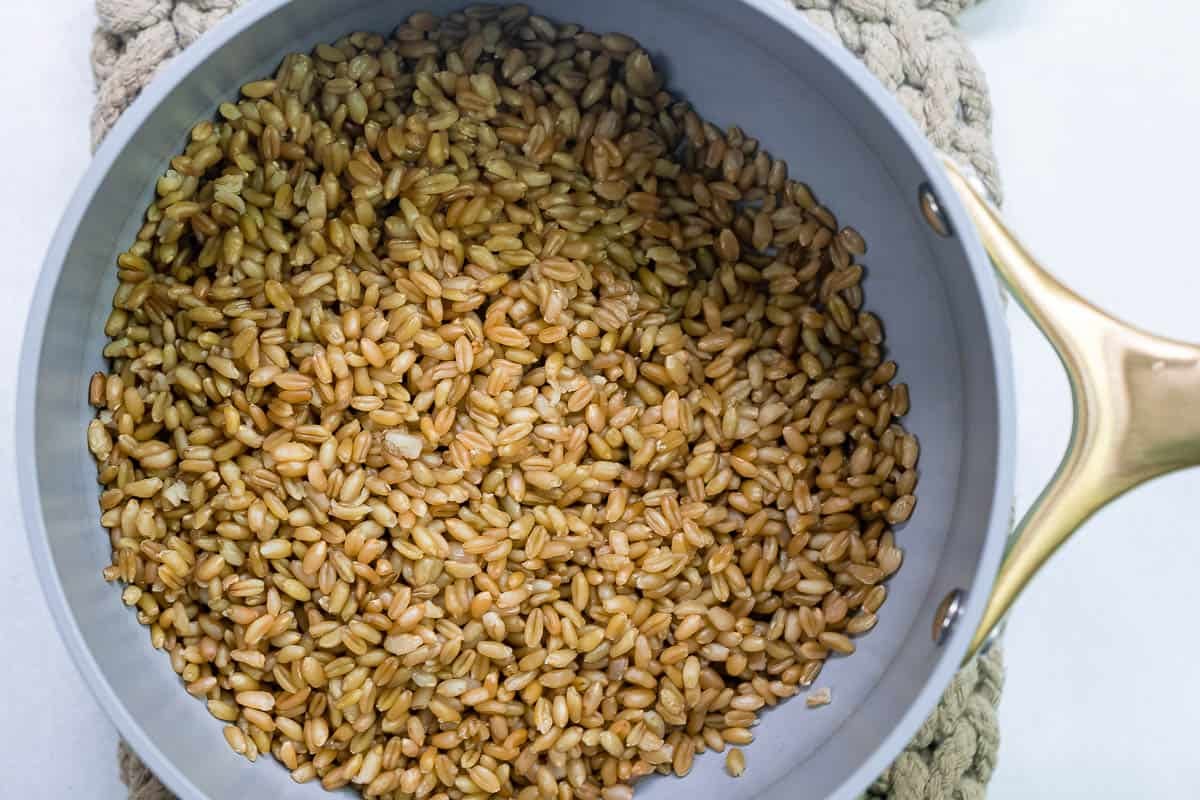
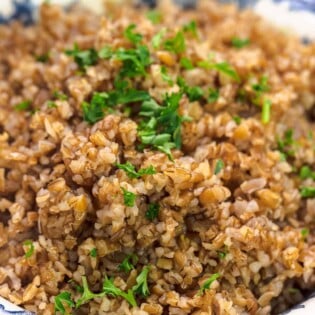
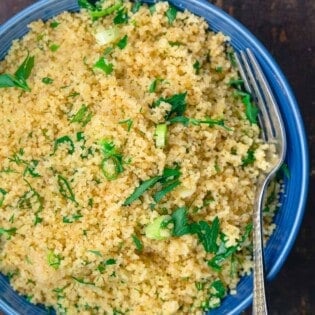
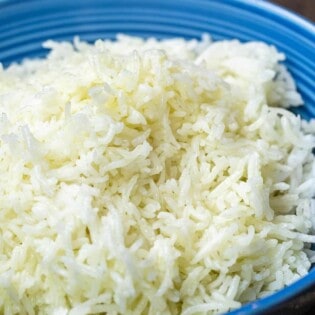
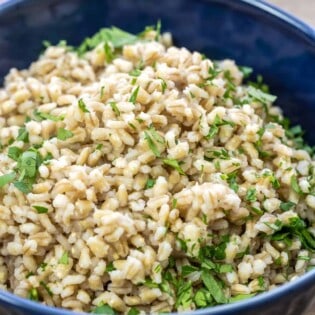
Elsewhere, I have read that whole freekeh should be soaked before cooking. Do you have any opinions on that technique?
Thanks!
Hi, Julie. You can soak freekeh, but we don’t really find it necessary.
Where is the best place to get Freekeh?
Hello! We just happen to sell it in our online shop. You can find it by clicking here.
I’m in the UK and found raw freekeh on Arabica London – online shop. It looks like wholegrain freekeh but only took 20 minutes for me (reason for rating)!
I have to credit you for being the one to introduce my family to freekeh! We all love it, and use in place of rice quite a bit.
Awesome! Thanks, Meredith!